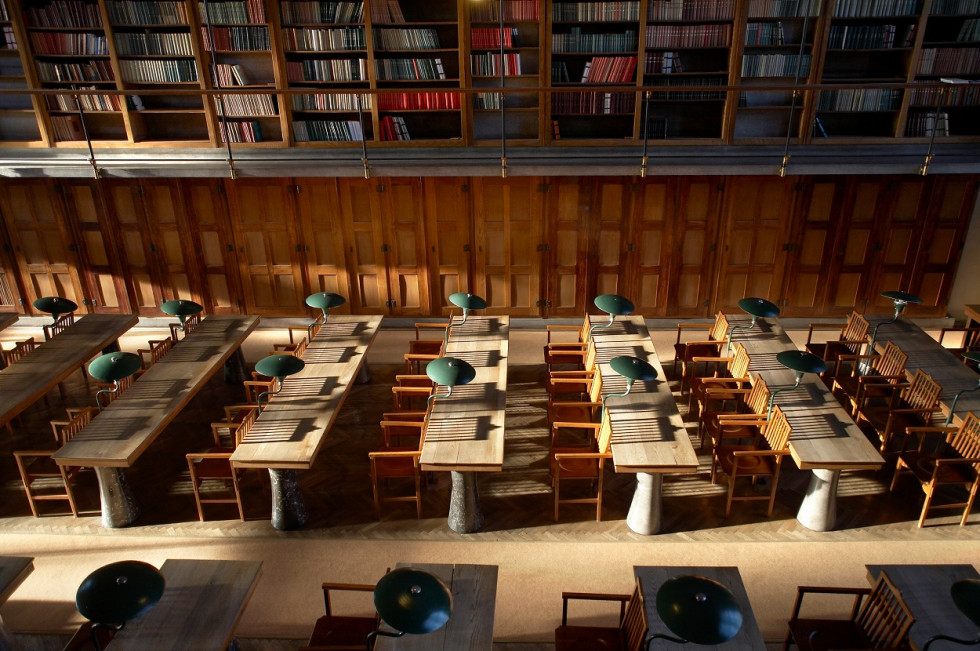2022 declared the year of Jože Plečnik and Giuseppe Tartini

Jože Plečnik, National and University Library, Ljubljana | Author Stane Jeršič
Architect Jože Plečnik
2022 marks the 150th anniversary of birth of architect Jože Plečnik (Ljubljana, 23 January 1872 – Ljubljana, 7 January 1957). His extensive oeuvre had an important impact on the architectural landscape of Slovenia as a whole, as well as on parts of Europe. His unique and comprehensive approach to design of buildings and spaces also made him an important role model and inspiration for contemporary architectural production worldwide.
During a short period between two world wars, he transformed Ljubljana from a peripheral city into a symbolic national capital. In his process of redesigning the city, he considered natural, architectural, historical and intangible qualities of space and, with major and minor adjustments, exposed them and integrated them into a series of public spaces (squares, parks, streets, promenades and bridges) and public buildings (a library, two churches, markets and a cemetery complex). Plečnik's reconfigurations are not based on radical modern renovation but on complementing and responding to the individual human experience. New designs create a dialogue and identification with the city, thus creating a human-centric approach. By considering the genius loci of locations and searching for an architectural approach that complies with needs of inhabitants, he left his mark on a number of Slovenian towns and places, such as Kamnik, Kranj, Bogojina and others.
Given that Plečnik’s year will put a special focus on his entire oeuvre which marked the Slovenian territory, it is also necessary to highlight his sacral, profane, and memorial architectures and urban layout concepts through which he enriched cultural landscape and settlements of the remote Prekmurje region (Bogojina, Grad, etc.), the Štajerska and Koroška regions (Črna na Koroškem) and the border hills of Posočje (Ponikve, Srpenica) up to Vipava Valley.
Plečnik's architectural approach is based on transformation of architectural elements, types and concepts from the world's architectural history and vernacular architecture, as well as on local craftsmanship and the use of local materials and their combination with new ones, rather than on the search for a completely new architectural expression based on industrial technologies.
At the beginning, Plečnik's works were generally marginal and less known. They only became relevant and globally recognised during the crisis of modernism in the 1970s, when the profession within postmodern society started to shift towards the appreciation of architectural history and its insights. His works gained international recognition with their presentation at the exhibition at the Centre Pompidou in 1986, which was followed by numerous exhibitions, books and publications of articles in professional journals.
The recent inscription of selected works of Plečnik in Ljubljana on the UNESCO World Heritage List represents a valuable international recognition for the protection and appreciation of architectural heritage important for humanity as a whole, and at the same time a commitment to protect it even more carefully and to integrate it into contemporary life.
Partners participating in the nomination and at the same time the authors of the proposal for Plečnik’s year are the Municipality of Ljubljana, the Institute for the Protection of Cultural Heritage of Slovenia, the City Museum of Ljubljana (MGML) and the Museum of Architecture and Design. They are already preparing to honour the 150th anniversary of Plečnik's birth with a rich programme of new exhibitions, publications and other activities.
The proclamation of Plečnik’s year will additionally stimulate the creation of new programmes and activities related to Plečnik's heritage and contribute to raising awareness on the outstanding humanistic and spiritual values of the architect's legacy in a positive manner.
Composer and violinist Giuseppe Tartini
The year 2022 marks the 330th anniversary of the birth of composer and violinist Giuseppe Tartini (Piran, 8 April 1692 – Padua, 26 February 1770). Since his youth and the early years of his musical engagement Tartini showed great interest not only in his instrument, the violin, but also in musical theory.
Apart from his numerous violin concertos – some of which later became popular as adaptations for other solo instruments, in particular for the trumpet – his violin sonatas are his best known and most frequently performed works today. The most famous of them is the Sonata in G Minor for Violin and Basso Continuo (catalogue number B.g5), known in the 18th century as "The Devil's Trill" (Il trillo del Diavolo).
In Piran, Tartini's birth house, one of the oldest buildings forming the backdrop of the Tartini Square, is still preserved. In addition to the violin, part of the composer's legacy has been preserved in Piran and Koper, mainly written material, which is kept in the Koper Regional Archives and its unit in Piran. The written material forms part of the collection in Tartini's house. The Koper Archives also contain a letter that Tartini addressed to his pupil, the famous violinist Maddalena Lombardini. In the letter he explains to her the rules of bowing technique. The letter is an interesting example of correspondence in violin teaching from the mid-18th century.
The proclamation of the Year of Tartini will further inspire the creation of new programmes and projects ranging from musical creativity to research and music education. The Ministry of Culture has invited public institutions and the public fund active in the field of culture to prepare content within the means available in the planning of programmes and projects for 2022 that will be related to this important anniversary. At the same time, this is an excellent opportunity for enhanced cooperation between important sectors, such as education and tourism.

